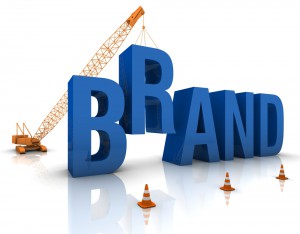 Most of us learn early on that building a brand is hard. Unfortunately, it’s also a crucial part of any successful startup business.
Most of us learn early on that building a brand is hard. Unfortunately, it’s also a crucial part of any successful startup business.
While there are plenty of great articles are out there about how to build a brand, there’s also a lot of misinformation. I certainly don’t claim to be a branding master, but I’ve got a few successful startups under my belt and I’d like to think that I’ve figured out what works and what doesn’t.
As you continue reading, you’re going to learn three surprisingly common branding myths and why they will kill your startup.
Myth 1. Build it and They Will Come
Many of you newbies might believe that building a business is the same thing as building a brand.
It’s not.
What’s the difference?
A business is the actual model, product or service that you provide. A brand is the way that model, product or service is perceived and identified by your audience.
Building a brand is much more difficult than building a business. You have to actively find a way into your audience’s attention span, and that’s easier said than done. Sure, having a great product or service certainly helps, but you also have to learn how your audience thinks, where they spend their time, and what they respond to.
Myth 2. Innovation = Success
Many people will argue this point with an example like Apple. You might say, “Look at Steve Jobs – he built excellent, innovative products and he was one of the most successful entrepreneurs of the century!”
To that I say, no. You’re wrong. Let’s take a look at what Steve Jobs actually did:
He did not invent the MP3 player. MP3 technology was patented in Germany all the way back in 1989. The first portable MP3 players were on the US market around 1999 – 2 years before the first iPod. And iTunes was just a follow-up to Napster.
Jobs didn’t invent the smartphone either. The first cellphone-PDA hybrid was developed by IBM in 1992. It was called SIMON, and yes, it had a touchscreen.
And I hope no one believes that Jobs invented the laptop… He didn’t even invent Mac OS! His partner, Steve Wozniak, was the inventor and coder.
Instead of being the innovator, Jobs took innovative products that already existed and figured out how to make people buy them. To do that, he had to know his customer, his markets, and how his business fit within those confines. Which brings me nicely to the last branding myth…
Myth 3. You Only Have One Audience
Do you know which car salesmen sell the most units?
Let’s say a family of four is shopping for a new car…
First, they go to a Ford dealership. The salesman immediately starts talking to the father, knowing that he’s the one with the checkbook. “Hello sir, what kind of car are you looking for today? Did you have a price range in mind? Any particular features?” The father answers his questions, maybe they take a couple test drives, but they don’t buy.
Then, they head across the street to a Toyota dealership. Again, the car salesman immediately focuses his attention on the father. And again, same story, same ending – no sale.
Finally, their last stop is at a Honda dealership all the way across town. This time, the salesman immediately focuses on the mother and kids. “How many youngsters will you be toting around, ma’am? Did you want a car with an entertainment system, or without? Is trunk space important to you?” The mother, thrilled to finally be getting some attention, quickly falls in love with a Honda Odyssey and persuades her husband to make the purchase.
So, what’s the lesson here? It’s not that Honda makes a great minivan.
The lesson is that the salesman who knew he had to appeal to more than one audience made the sale. This will always be true.
Sure, you can have a primary audience – the one that your brand is most directly targeted towards. However, understand that the most successful brands appeal to a wide range of people.
Ask yourself, what audiences are you missing out on? Who could your brand connect with that it’s not currently? Chances are, you’re missing out on a customer-base you didn’t even know existed.
I hope that I’ve given you something to think about after reading this article. Take a good hard look at your brand and make sure you’re not leaving any reputation on the table.
Are there any other common branding myths that we should debunk?
Either way, thanks for reading!
Will Mitchell is a a young entrepreneur and marketer living in Tampa, FL. Learn more about him from the StartupBros About Page. Or, connect with him on Facebook, Google+ or Twitter.
Image Credit: Shutterstock.com




